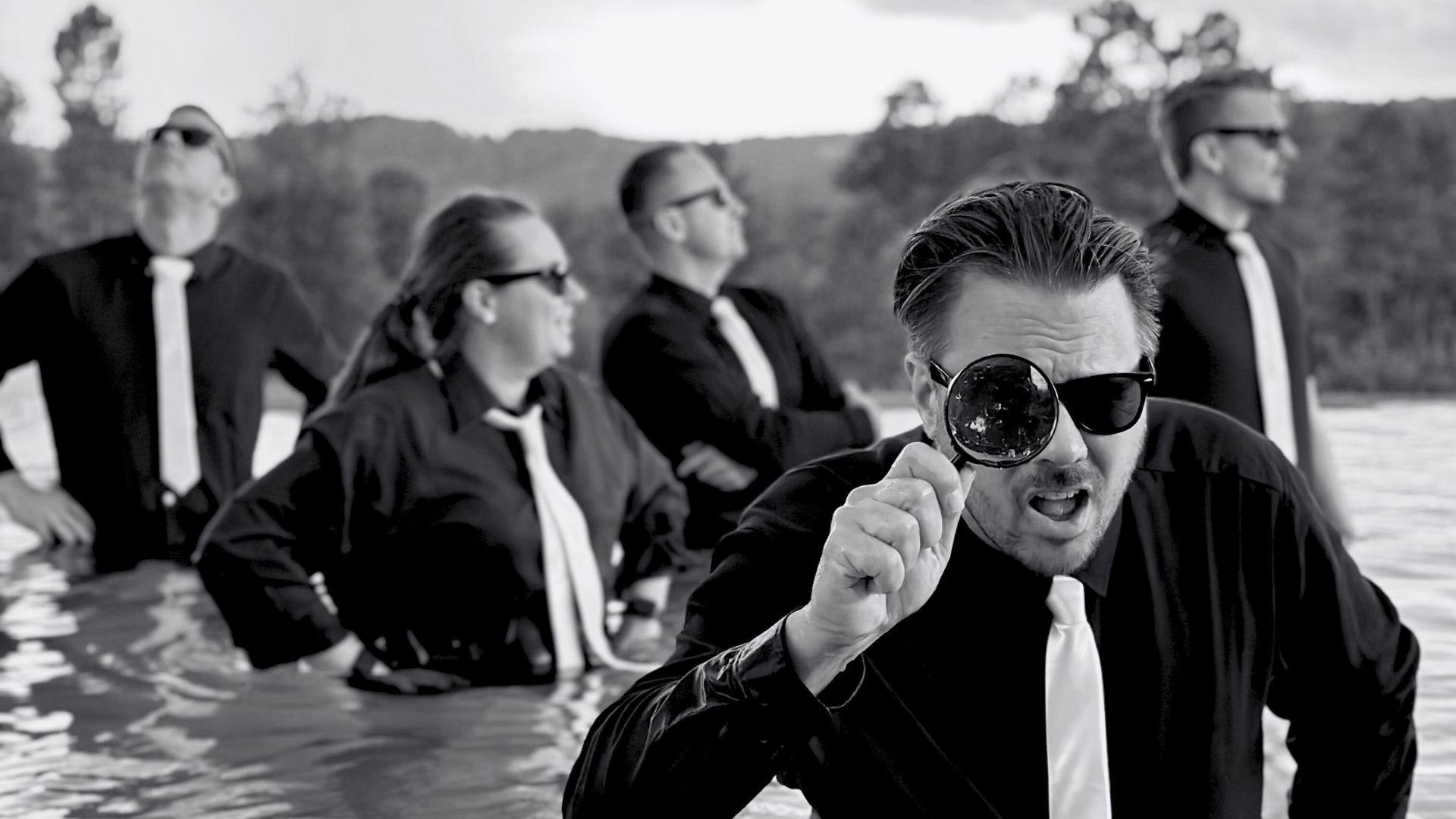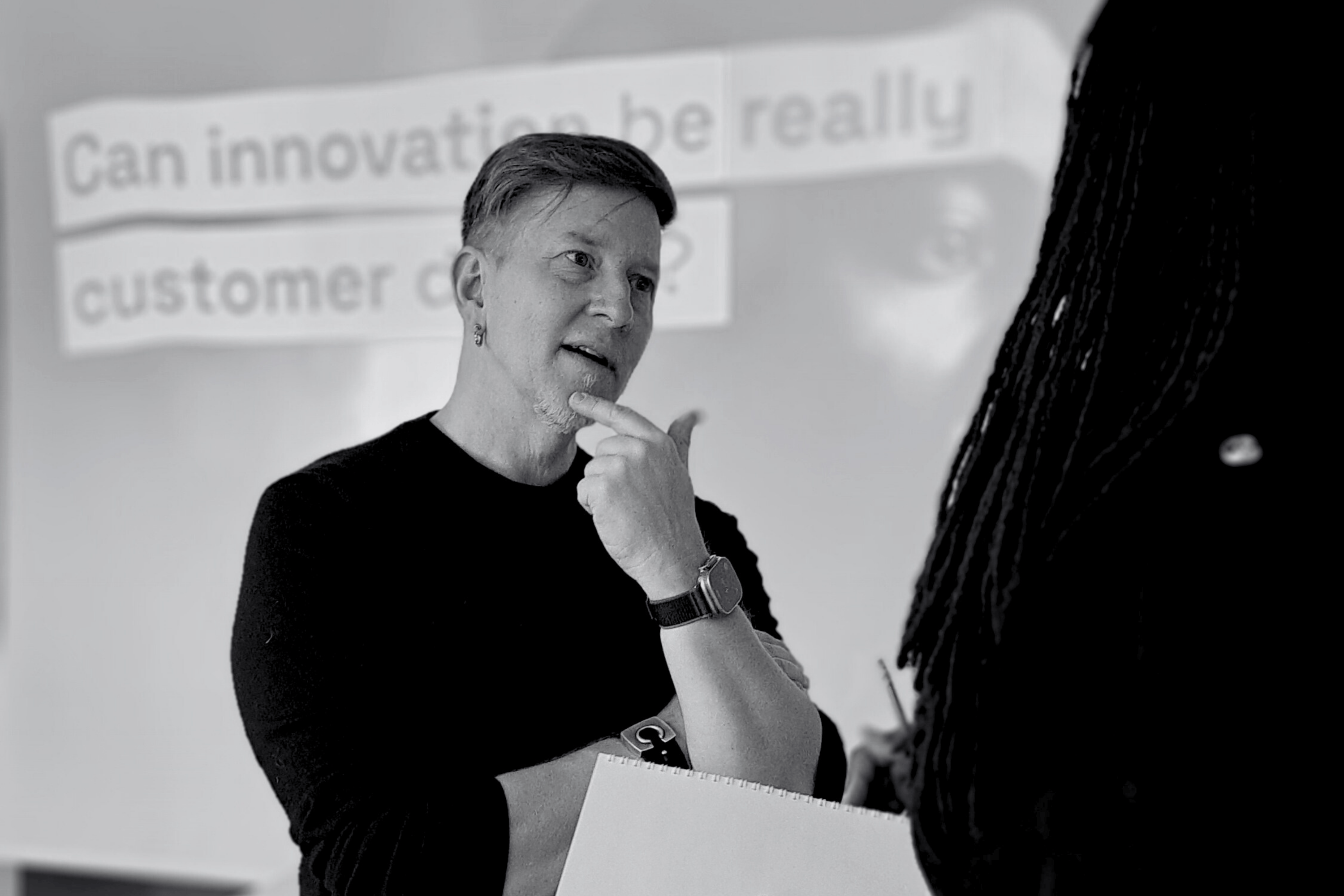
Blind spots: When critical signals go unseen
Welcome to part 5/7 of the Change Acceleration series!
This exploration reveals how strategic and cultural blind spots form inside organizations — from missed trends to internal denial — and how foresight practices help surface weak signals before they become urgent. Completing our foundational Change Acceleration framework, Blind Spots shows how the three previous dysfunctions create an environment where organizations lose their ability to sense and respond to change.
The Signals We Miss
Organizations rarely ignore change — but they often react too late. Strategic shifts, cultural currents, and technological breakthroughs often seem to “arrive suddenly,” when in fact they’ve been visible for some time. The problem isn’t invisibility. It’s inattention.
One global insight firm puts it plainly: failure to respond to weak signals is a leading cause of failed transformation (Corporate Compliance Insights).
Blind spots form when signals get filtered, inconvenient truths are buried, or trend scans are disconnected from action. They’re not just gaps in knowledge — they’re gaps in conversation. We’ve seen this play out in multiple ways. AI surged into the workplace seemingly overnight — not because it was invisible, but because organizations waited too long to treat it seriously. ESG failures have followed a similar pattern. While sustainability, ethics, and social responsibility are often declared, they’re not always deeply measured or embedded — until reputational or regulatory damage makes the issue unavoidable.
This is how blind spots become systemic. They don’t just delay change. They distort it.
How Blind Spots Show Up
Organizations rarely miss the big shifts, but they often fail to connect or act on the subtle ones. These are some of the most common patterns:
Ignored or filtered weak signals
Emerging trends and internal insights are often seen but not surfaced. Frontline knowledge gets stuck in middle layers, and leadership hears about risks too late — or not at all. In a CareerMinds study, this was described as a “feedback black hole.” The reality is often captured in quiet hallway comments like, “That’s interesting, but it doesn’t affect us… yet.”
This mindset isn’t just passive — it’s dangerous. A case we’ve already touched on in the Systems Reliance article makes the point painfully clear. The British Post Office’s Horizon system wrongly flagged accounting discrepancies in local branches for over a decade. Hundreds of sub-postmasters were accused of fraud, many lost their livelihoods, and some were even imprisoned. And while the technical faults were raised repeatedly, the system was trusted more than the people using it. This wasn’t just a governance or IT failure. It was a catastrophic blind spot, enabled by overconfidence in a system and the cultural reluctance to challenge it.
Tech shifts without foresight
New technologies are introduced reactively, without deeper conversation about their implications. AI is a clear example. As noted in Forbes and ESReDA, when AI is bolted onto legacy systems like ERPs without intent, it tends to create complexity instead of value. People adopt tools without knowing why or how they’re being used. The underlying mindset becomes, “We’re using AI now — but no one’s sure where or why.”
Governance and compliance blind spots
Sustainability, ethics, and regulation are frequently treated as box-checking exercises rather than strategic drivers. A UNSW study found that 97% of Australia’s top companies publish social impact statements, but most are vague, inconsistent, or performative. Meanwhile, real-world failures — from emissions scandals to labor rights oversights — show how often organizations learn too late. In parallel, regulatory changes such as the EU AI Act or ESG disclosure requirements often surface at the eleventh hour. Without horizon scanning or clear internal ownership, the default sentiment becomes, “Wait — we’re subject to that too?”
Boardroom misalignment
Strategic risks such as AI, cybersecurity, or labor shifts don’t always reach the board with the clarity or urgency they require. A 2024 Protiviti report noted how boards often operate in hindsight — reacting to issues only after they’ve matured into crises (Corporate Compliance Insights).
Cultural blind spots
Issues like inclusion, ethics, and psychological safety aren’t invisible — they’re often quietly accepted as background noise. As ScienceDirect shows, discomfort and disengagement persist when normalized as “just how things work.” The absence of feedback is mistaken for alignment. “People seem fine” becomes a reason not to act.
These patterns aren’t just symptoms of poor awareness. They are the result of fragmented ownership and over-reliance on formal metrics.
Why Blind Spots Matter
Blind spots don’t typically trigger alarms. They accumulate quietly, bending strategy, distorting delivery, and eroding clarity until the damage is hard to undo.
One of the most emblematic cases is Kodak. The company invented the first digital camera in 1975 and invested heavily – reportedly around $2 billion – into digital innovation, even recruiting a CEO to lead the digital transformation (ResearchGate, LinkedIn, Rochester Beacon). Yet leadership balked at cannibalizing their cash‑cow film business. Kodak’s board chose stability over agility. As a result, despite possessing a head-start, they missed the disruptive wave of digital photography. By 2012, Kodak filed for bankruptcy.
Kodak’s downfall illustrates exactly this: knowledge without response is meaningless. Intelligence without action is irrelevant. That’s the danger of blind spots.
In the end, Kodak didn’t lose because it failed to innovate — it lost because it hesitated to adapt. They saw the future. They just couldn’t let go of the past. And in doing so, they lost what they once owned: the Kodak moment.
“The greatest enemy of knowledge is not ignorance, it is the illusion of knowledge.” — Stephen Hawking
At the core of this collapse is a deeper vulnerability: organizations have largely lost their ability to adapt. The larger they are, the slower they tend to move. Plans multiply. Priorities overlap. Change becomes something to manage, not something to pursue.
Leadership models are still built around the illusion of control. Roadmaps, OKRs, and milestones provide comfort—but they also create brittleness. They signal progress to shareholders and boards, but often suppress the very responsiveness that makes strategy viable in the first place. When a plan is locked, deviation becomes treated as failure.
In siloed organizations, this problem deepens. Signals from the edge struggle to reach the center. Leaders assume alignment because no one signals otherwise. But the system discourages dissent, and the truth arrives late, if at all.
This is the heart of why blind spots matter. They don’t just create risk — they undermine the very ability to react. Because, as Kodak painfully showed us: seeing without adapting is indistinguishable from not seeing at all.
“The capacity to adapt begins with the capability to see.”
If weak signals never surface, there’s nothing to respond to. If insights don’t reach decision-makers, agility is just theater. If no one listens until it’s urgent, it’s already too late.
The organizations that acknowledge this do better. They invest in ways to see sideways. They build flexibility into decision-making. They listen early. And as a result, they find momentum before others know it’s needed.
The Designer’s Role in Seeing Sooner
If the capacity to adapt begins with the capability to see, then what organizations truly need — even if they rarely say it out loud — is responsiveness at scale. Not just a plan, but the awareness to know when to change it.
This is where design steps in, as a possible strategic sensing layer within the organization.
Design is uniquely equipped to help organizations detect and interpret change before it becomes urgent. Two core practices enable this:
Foresight methods — such as horizon scanning, speculative design, and scenario planning — help organizations stress-test assumptions and prepare for multiple plausible futures. These aren’t predictive tools. They’re instruments of strategic readiness. This work is increasingly structured through systemic approaches — sometimes referred to as systemic foresight — such as the Design Council’s Systemic Design Framework and the Systemic Foresight Methodology, which leverage STEEPV analysis (Social, Technological, Economic, Environmental, Political, and Values) to ground and scale this thinking.
Participatory research complements this by gathering signals from across the organization — employees, customers, users, even critics. These are the faint signals often missed by analytics. Research turns them into structure. Co-created insight builds shared language for decision-making — and trust in what that decision means.
All of this is only possible with usable, human-scale data. Not just dashboards, but behavioral insight. Not just KPIs, but emotional context. Design helps bridge the gap between numbers and nuance, and builds the connective tissue between insights and action.
Design is effective in this role not just because of methods, but because of position.
It often sits between silos and not inside them. And particularly for external designers or consultants, the vantage point is different: they’re not bound by legacy structures or existing internal narratives. They don’t inherit the blind spots of the system they’re working within.
In-house teams, by contrast, are often restricted by the structure that employs them. Their scope is shaped by their department. Their time is governed by billable targets. And foresight – being intangible and hard to measure – often loses out. In a tight quarter, the sensing work is the first to go.
This is why many organizations need external designers or consultants to even start sensing again. Not because they lack intelligence, but because they’ve deprioritized the space to see it.

Seeing Forward, Not Just Looking Back
Most organizations don’t lack strategy. They lack signals. Not because it isn’t there, but because they’re not looking where it lives, in the emerging, the uncertain, the human.
Blind spots aren’t fixed by more dashboards or smarter systems. They’re addressed by building an atmosphere and a process for sensing — one that people across the organization both recognize and respect.
It’s not about adding more data. It’s about learning how to see differently together.
This is where design acts as an accelerant of awareness and alignment. By surfacing faint signals and building shared language around what they mean, design helps organizations shift from reacting late to responding early. Not surprisingly, this agility is at the heart of organizations that outperform the competition, as proven again by McKinsey’s Business Value of design.
And just like with friction or disconnects, you don’t need to launch a transformation to start. The simplest step is to change how the next decision is made. How the next signal is explored. How the next workshop, initiative, or research brief is framed.
If you want to adapt faster, you first have to notice differently.
That’s the designer’s role in change acceleration:
Not to predict the future. Not to speak about trends. But to help people see what matters — early enough to do something about it.
___
Participate in the discussion: Change Acceleration Series in LinkedIn:
- From Designers to Change Agents
- Friction - Where Momentum Gets Stuck
- Disconnects – When The Signal Breaks Down
- Systems Reliance – When The Tool Becomes The Strategy
- Blind Spots – When Critical Signals Go Unseen (you are here)
Recommended articles

POV: Building real stakeholder trust in UX research


Systems Reliance: When the tool becomes the strategy


